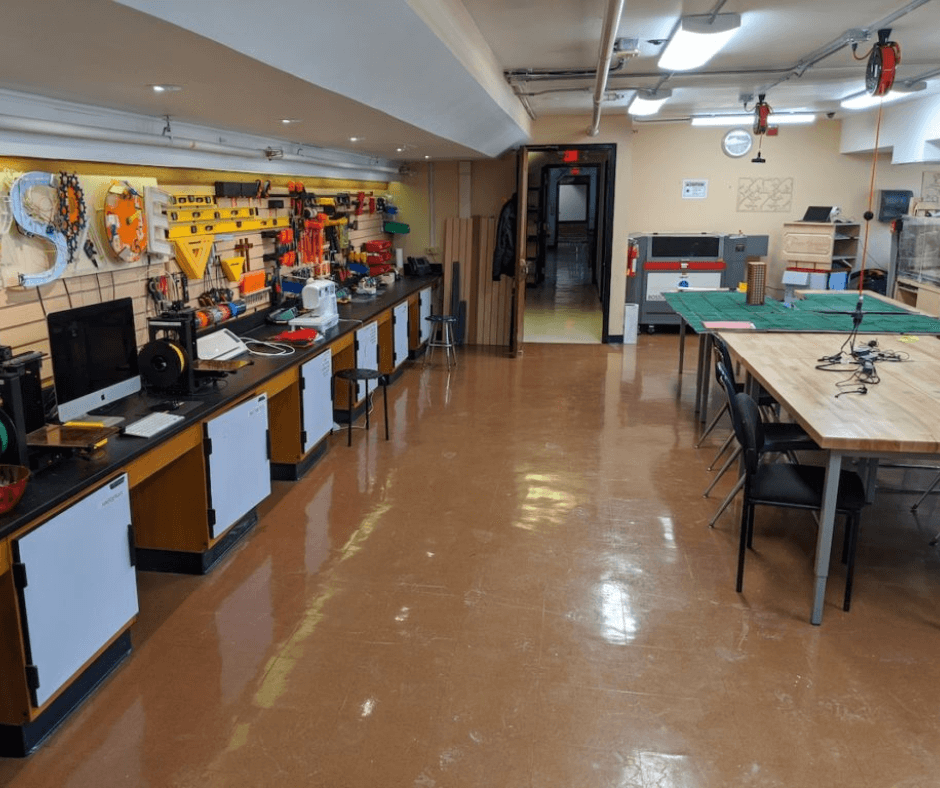STEAM Makerspace Support
Unlock the potential of makerspaces in K-8 education. Discover the benefits of makerspace libraries in STEAM and how to start a STEM Lab at your school. Elevate your experience with TinkRworks.
What is a Makerspace in K-8 Education?
In the realm of modern education, the term “makerspace” has become increasingly prevalent, but what exactly does it entail? A makerspace is a collaborative workspace within a classroom, library, or other educational space that often contains physical materials and resources that students can freely access. This space can house arts and craft supplies that one would typically find in a school, as well as technological resources like tablets, printers, 3D printers, sewing machines, circuit boards, or audio recording devices. These dynamic STEM Labs are designed to foster curiosity, ignite creativity, and encourage exploration.
The magic of a makerspace lies in its ability to blur the lines between learning and making. Here, students aren’t just passive learners; they’re creators, innovators, and architects of their own knowledge. By embracing the spirit of making, they not only develop practical skills but also cultivate essential qualities like resilience, adaptability, and problem-solving abilities.

Benefits of Makerspace Libraries for STEAM

Research indicates that makerspaces play a pivotal role in enhancing student engagement and learning outcomes. By providing students with opportunities for hands-on experimentation and exploration, makerspaces promote active learning and deeper conceptual understanding. According to studies conducted by educational institutions such as the International Society for Technology in Education (ISTE), students involved in makerspace activities exhibit increased motivation, improved problem-solving skills, and a deeper appreciation for STEAM concepts.
Step into a STEM makerspace Library, and you’ll encounter a world of endless possibilities. These vibrant hubs serve as incubators for creativity, empowering students to unleash their imagination and transform ideas into reality. From designing prototypes to coding interactive simulations, Makerspace libraries provide a platform for students to explore their interests, collaborate with peers, and develop essential 21st-century skills.
The impact of makerspace libraries extends far beyond the realm of academia. According to research conducted by organizations such as the National Science Foundation (NSF), students engaged in makerspace activities demonstrate improved problem-solving abilities, enhanced collaboration skills, and greater persistence in the face of challenges. Moreover, makerspace libraries foster a culture of inquiry and experimentation, instilling in students a lifelong love for learning and innovation.
STEAM Makerspaces: Getting Started
Ready to start a makerspace STEM lab at your school? Here’s a comprehensive guide to help you get started:
Selecting the right location for your makerspace is crucial. Designate an area for your makerspace in the corner of the library, inside a classroom, or in another designated space at your school.
Equip your Makerspace with the necessary tools, materials, and technology to facilitate hands-on learning. Begin with the essentials: whiteboards, tools, craft supplies, recyclables, and technology like charging stations and laptops. As your makerspace STEM lab evolves, consider incorporating advanced resources such as 3D printers, laser cutters, and robotics kits.
Engage students in hands-on STEAM activities that encourage exploration, experimentation, and innovation. Our K–8 makerspace lesson library, TinkRpedia, has everything you need to get started with STEAM Project-based Learning! The makerspace projects inside TinkRpedia range from beginner all the way through advanced. All you need are recycled materials — and for more advanced makerspaces there are also projects that utilize 3D design and printing.
Browse our free STEAM makerspace library for comprehensive STEAM lessons created by educators like you!

